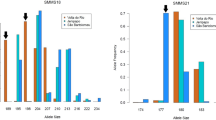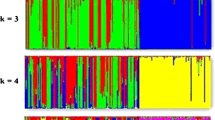Abstract
Apicomplexan protozoan parasites include some of the most globally important human and animal pathogens, all of which have obligatory sexual cycles in their definitive hosts. Despite their importance and the relevance of understanding the population genetic structure and role of genetic exchange in generating diversity, population genetic analysis has largely been restricted to Plasmodium spp. and Toxoplasma gondii. These species show a considerable diversity of population structure suggesting different strategies for transmission and survival in mammalian hosts. We have undertaken a population genetic analysis of a further apicomplexan species (Cryptosporidium parvum) to extend our understanding of the diversity of genetic structures and test whether it has a clonal population structure. Nothing is known about the population structure of this parasite. We have analyzed 180 parasite isolates from both humans and cattle derived from a single discrete geographical area, using three minisatellite and four microsatellite markers that define 38 multilocus genotypes. Analysis of linkage disequilibria between pairs of loci combined with measures of genetic distance and similarity provides evidence that the sample comprises four genetically isolated populations. One group of human isolates consists primarily of two closely related multilocus genotypes (clonal), while the major subtypes of a second group, common to both humans and animals, show a panmictic population structure. The data provide an important step in understanding the role of genetic exchange in these parasites, which is an essential prerequisite for determining the value of multilocus genotyping for the analysis of sources of human infection as well as future molecular epidemiological studies.
Similar content being viewed by others
Author information
Authors and Affiliations
Rights and permissions
About this article
Cite this article
Mallon, M., MacLeod, A., Wastling, J. et al. Population Structures and the Role of Genetic Exchange in the Zoonotic Pathogen Cryptosporidium parvum . J Mol Evol 56, 407–417 (2003). https://doi.org/10.1007/s00239-002-2412-3
Received:
Accepted:
Issue Date:
DOI: https://doi.org/10.1007/s00239-002-2412-3




